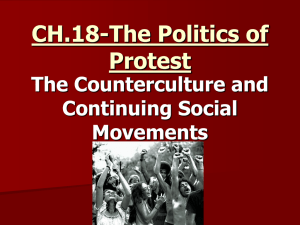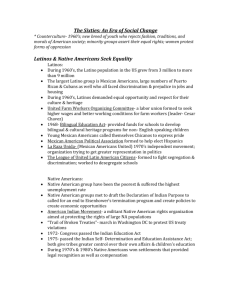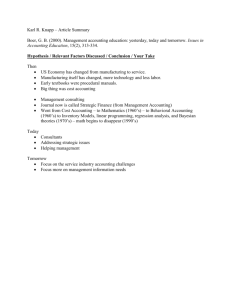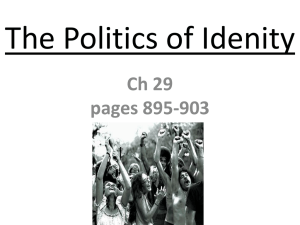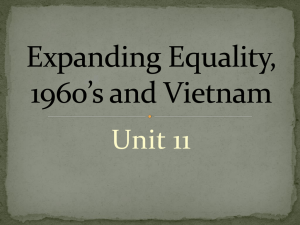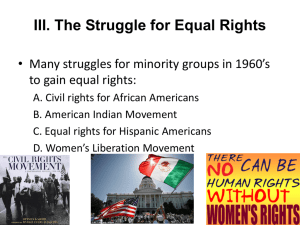CH.18-The Politics of Protest Movement
advertisement
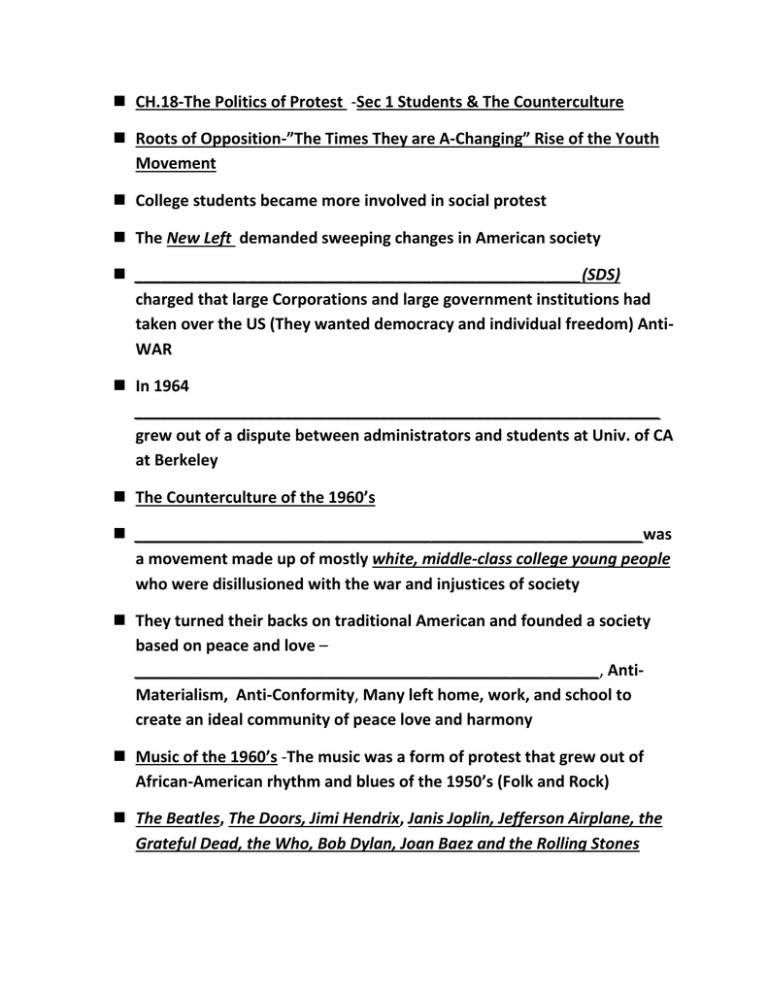
CH.18-The Politics of Protest -Sec 1 Students & The Counterculture Roots of Opposition-”The Times They are A-Changing” Rise of the Youth Movement College students became more involved in social protest The New Left demanded sweeping changes in American society ___________________________________________________(SDS) charged that large Corporations and large government institutions had taken over the US (They wanted democracy and individual freedom) AntiWAR In 1964 ____________________________________________________________ grew out of a dispute between administrators and students at Univ. of CA at Berkeley The Counterculture of the 1960’s __________________________________________________________was a movement made up of mostly white, middle-class college young people who were disillusioned with the war and injustices of society They turned their backs on traditional American and founded a society based on peace and love – _____________________________________________________, AntiMaterialism, Anti-Conformity, Many left home, work, and school to create an ideal community of peace love and harmony Music of the 1960’s -The music was a form of protest that grew out of African-American rhythm and blues of the 1950’s (Folk and Rock) The Beatles, The Doors, Jimi Hendrix, Janis Joplin, Jefferson Airplane, the Grateful Dead, the Who, Bob Dylan, Joan Baez and the Rolling Stones Ch 18 Sec 2 Women Fight for Equality-The Feminist Movement Women Fight for Equality - In 1920 the 19th Amendment was passed giving women the right to vote (Women’s Suffrage) In the 1960’s ___________________________________________________was the belief that women should have economic, political, and social equality with men In 1963 Betty Friedan’s Feminine Mystique identified the “problem that has no name” Women were not happy in the 1950’s (Men’s work v Women’s work) In the 1960’s women were forced into clerical work, retail, social work, nursing, and teaching Women’s Activism of the 1960’s Women were members of SNCC and SDS, and active in the civil rights movement In 1966 28 women including Friedan founded the _______________________________________________________________________ NOW fought against gender bias in hiring and in the workplace and pushed for child-care facilities In 1969, a journalist and political activist Gloria Steinem joined the feminist movement She founded the National Women’s Party Caucus and Ms. ( Woman’s Magazine) The Equal Rights Amendment (ERA) Congress passed the ____________________________________ in 1972, it was first introduced in 1923 (Men and Women same rights and protections) - 38 states needed to ratify it to make it part of the Constitution ( 35 received) A Stop-ERA campaign was launched by conservative religious groups, and anti-feminists led by Phyllis Schlafly - Radical Feminist “hate men, marriage, and children” Fears of women being drafted, no husband responsibility, and possible same-sex marriages ____________________________________ -Feminist groups supported a woman’s right to chose to have an abortion In 1973 the Supreme Court ruled in favor of the feminists, Extremely Controversial, Pro-Choice v Pro-Life Equality in Education -In 1972 Congress passed The Educational Amendments _____________________________ – prohibited federally funded schools from discriminating against women in nearly all aspects of school operations from admissions to athletics Ch 18 Sec 3 Latino Americans Organize Latinos of Varied Origins Mexican Americans – 1miilion came in 1910’s following the Mexican Revolution, some came in the 1940’s and 1950’s as braceros, and 1 million came in the 60’s ______________________________________________ began immigrating after the Spanish American War of 1898, and by 1960’s 1miilion in the US (1/2 NYC) Cubans fled Castro after 1959 and large communities formed in NYC, Miami, NJ During the 1960’s thousand of Central and South American emigrated, Most Latinos lived in barrios Latinos Fight For Change In 1966 __________________________________________________ and Dolores Huerta merged their new unions to form the United Farm Workers Organizing Committee Chavez believed in non-violence in dealing with California’s large fruit and vegetable companies (Ex. Boycotts/Fast) In the 1960’s the Chicano Movement took off, “Brown Power” and the “Brown Berets” demanded Spanish speaking classes and Chicano studies programs at universities (Bilingual ED. Act of 1968) Latino Political Power During the 1960’s eight Hispanic Americans served in the House and Joseph was elected to the Senate. In the 1940’s and 1950’s the _______________________________________________________________ fought in the courts for school desegregation and gov. funding In the 1970’s La Raza Unida ( Mexican Americans United) ran Mexican Candidates in many local elections
